Welcome to the fascinating world of land management for deer, where we delve into the art and science of creating optimal habitats for these majestic creatures.

Land Management for Healthy Deer Populations
Understanding Deer Habitat Needs
Deer need specific habitats to thrive. They require access to water, food, and shelter. By understanding these needs, you can manage your land more effectively for deer.
Water Sources: Essential for Deer
Deer depend on water for hydration and cooling off. Strategically placed water sources on your property can help manage deer populations.
Predator Control: Maintaining Ecosystem Balance
Managing predator populations is crucial. It helps keep a healthy balance between predators and deer, ensuring their survival.
Food Plots: Deer Dining Havens
Food plots are areas planted with deer-friendly vegetation. They provide essential nutrition and attract deer. Diverse plantings cater to seasonal dietary needs.
Soil Analysis: The Foundation of Land Management
Before starting any land management activities, assess your land. A soil analysis will help you choose the right vegetation and maintain ecological sustainability.
Deer Habitat
Food Sources: The Heart of Habitat
Deer are herbivores, seeking areas rich in vegetation. Habitat improvement measures, like planting native species, support deer nutrition.
Water: A Vital Element
Deer need reliable water sources. Whether natural or artificial, ensuring water availability is key to deer survival.
Shelter and Safety
Deer require cover for protection. Balancing cover with open spaces for grazing is essential for a healthy ecosystem.
Seasonal Movements: Adapting to Change
Deer’s habitat preferences change with the seasons. Providing year-round food sources and shelter is vital for their well-being.
Understanding deer habitat involves ensuring food, water, and shelter, considering their seasonal needs. This knowledge aids in effective wildlife conservation and promoting healthy deer populations.

Why Land Management Matters
Creating and Maintaining Deer Habitats
Land management is key to sustaining healthy deer populations and preserving ecosystems. It involves enhancing deer habitats through various means like developing food plots, managing water sources, and balancing predator-prey relationships.
Impact on Deer Populations
Proper land management offers deer adequate food, shelter, and bedding areas. Food plots, for example, provide essential nutrition, especially when natural vegetation is limited.
Ecological Sustainability
Good land management practices align with local regulations and contribute to wildlife conservation. This includes choosing suitable plants through soil analysis and planting native vegetation to restore natural habitats.
Ecosystem Balance
It’s crucial to manage predator populations to maintain a balanced ecosystem. This can be done through monitoring and sustainable hunting practices.
By focusing on these elements, land management supports deer populations and ecological sustainability, promoting a harmonious environment for wildlife.
Assessing the Land for Deer Management
Understanding Soil and Terrain
Effective land management begins with a thorough land assessment. This includes soil analysis to understand nutrient content and fertility, and examining the terrain to determine deer movement patterns and habitat preferences.
Water Source Evaluation
Evaluating water sources is vital. Deer need reliable water for survival, so identifying natural or creating artificial water sources is beneficial.
Compliance with Local Regulations
It’s important to be aware of and comply with local regulations regarding hunting, food plots, and predator control.
This comprehensive assessment forms the foundation for effective land management, aiming to improve habitat quality and support wildlife conservation.
Land Management: Soil Analysis
Soil analysis is a key step in managing land for deer. It reveals soil quality and suitability for supporting deer habitats. This involves checking the soil’s pH levels, nutrient content, and fertility, allowing informed decisions for optimal plant growth.
Key Factors in Soil Analysis
- pH Levels: Deer prefer slightly acidic soils, ideally between pH 6.0 and 6.5. Incorrect pH levels can limit plant growth, affecting deer food sources.
- Nutrient Content: Checking for essential nutrients like nitrogen, phosphorus, and potassium is crucial. This helps in identifying deficiencies or excesses that impact plant health.
- Soil Texture and Drainage: Ideal deer habitats have well-drained soils, preventing root rot and promoting healthy vegetation growth.
Conducting Soil Analysis
Collect multiple soil samples from different areas for a comprehensive analysis. These should be tested in a lab for pH level, nutrient content, and more. Based on the results, strategies like fertilization or lime application can be implemented to enhance deer habitat.
Topography and Landscape in Deer Management
The topography and landscape of your property are vital in influencing deer behavior. Understanding these aspects can guide habitat improvements and hunting strategies.
Key Landscape Features
- Ridges and Valleys: Ridges act as natural corridors for deer movement, while valleys offer water sources and shelter. Managing these areas can create favorable conditions for deer.
- Open Fields and Meadows: Ideal for food plots, these areas supplement natural browse and attract deer.
- Forested Areas: Provide essential cover for deer during harsh weather and offer seclusion from human activity.
Balancing Ecosystems
A healthy balance between open fields and dense forests supports diverse habitats, benefiting ecological sustainability. By analyzing your property’s landscape, you can make informed decisions that benefit wildlife conservation and sustainable hunting practices.
Water Sources: Vital for Deer Habitats

Natural and Artificial Water Sources
Water is critical for deer survival and well-being. A land management plan should prioritize reliable water sources. Natural options like streams, ponds, or lakes offer consistent supply and attract diverse wildlife.
It’s important to protect these from pollution. Artificial sources, like ponds or troughs, are beneficial, especially where natural water is scarce or during droughts. Regular maintenance ensures these sources stay clean and functional.
Enhancing Habitat with Water Features
Incorporating features like wetlands or rain gardens improves soil moisture, plant diversity, and feeding opportunities. When planning water sources, consider deer needs and minimize disturbance to encourage their use. Check local regulations before making major changes to water bodies.
Land Management: Developing Effective Food Plots
Food plots are key in attracting and supporting deer. Start with a soil analysis to understand fertility and nutrient levels. This guides your choice of plants and any soil amendments needed, like lime or fertilizer.
Plant Variety for Year-Round Nutrition
Choose a mix of annuals and perennials for continuous nutrition. Options include clover, chicory, soybeans, alfalfa, turnips, oats, and brassicas. Ensure these plants provide necessary nutrients across seasons.
Timing and Location of Food Plots
Planting should align with seasonal and climatic patterns. For instance, plant cool-season crops like clover during early fall or spring. Locate plots near water sources and cover areas to make deer feel secure while feeding.
Creating a Balanced Ecosystem
By integrating food plots into your land management, you not only support deer populations but also contribute to ecological balance. Proper soil management, diverse plant selection, and strategic plot placement enhance both flora and fauna, fostering a thriving environment.
Planting Strategies for Deer Land Management
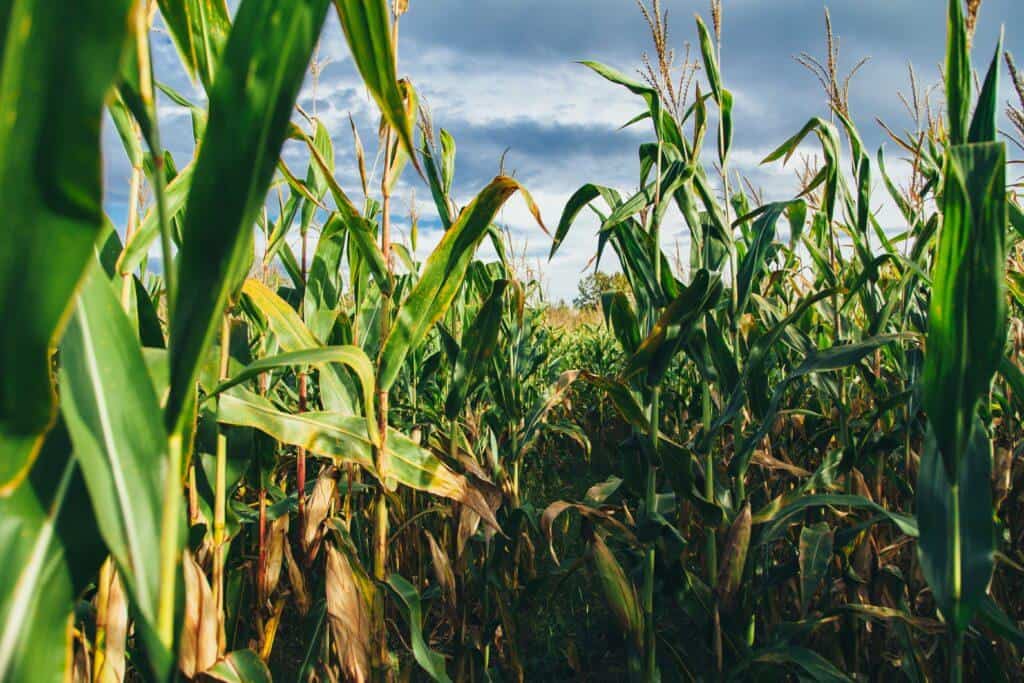
Optimizing Food Plots
When managing land for deer, consider the location and size of food plots. It’s better to have multiple smaller plots than one large one to avoid overgrazing. Choose plants like clover, soybeans, alfalfa, and brassicas for high-quality forage and year-round nutrition. Rotate crops annually to maintain soil health and variety in deer diet.
Timing and Habitat Improvement
Plant cool-season crops in early spring or late summer and warm-season crops in late spring or early summer. Enhance food plots with habitat improvements, like travel corridors or edge habitats, to attract deer and support ecosystem balance.
Holistic Land Management
Successful land management involves more than attracting deer. It includes maintaining ecological sustainability, following local regulations, practicing ethical hunting, and managing predators.
Seasonal Considerations in Deer Land Management
Spring: Awakening and Nutrition
In spring, plant nutrient-rich crops like clover, alfalfa, or soybeans. Monitor food plot growth to provide essential nutrition for deer after winter.
Summer: Heat and Water Management
Summer challenges include heat and potential drought. Maintain water sources to support deer survival and concentrate populations for hunting.
Autumn: Breeding Season Preparation
Focus on creating bedding areas and maintaining native vegetation for shelter during the rut. Bucks become more active in marking territories and seeking mates.
Winter: Overcoming Scarcity
Winter brings food scarcity and harsh weather. Supplemental feeding and baiting stations can sustain deer populations during these times.
Adapting Strategies Year-Round
Understand seasonal impacts to adapt land management strategies. Ensure year-round food and shelter availability, balance ecological sustainability, and follow local regulations and hunting ethics.
Native Vegetation: Key to Deer Land Management
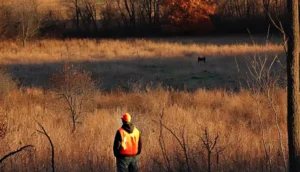
The Role of Native Plants
Integrating native vegetation is vital in deer land management. These plants are naturally suited to local conditions, provide essential food, and adapt well to the local environment. Including various native grasses, herbs, and browsed plants offers diverse nutrients for deer’s optimal health.
Ecological Benefits
Native vegetation supports the broader ecosystem, providing habitats for birds, shelter for small animals, and pollinator attraction. This biodiversity is crucial for a balanced ecosystem. Natural thickets, like blackberry or rose bushes, provide deer with protective cover and secluded bedding areas.
Choosing the Right Plants
When selecting native plants, consider soil suitability and seasonal blooming patterns to ensure year-round food availability. Adhering to local regulations and guidelines is important, especially regarding endangered or invasive species.
Creating Shelter and Bedding Areas for Deer
Designing Deer Habitats
Strategically designed shelter and bedding areas significantly enhance deer habitats. Dense vegetation, a mix of trees, and brush piles offer ideal cover. Bedding areas should be on south-facing slopes or gentle terrains for sunlight exposure and visibility.
Location and Maintenance
Ensure these areas are near food and water sources for convenience. Remove invasive species and plant native vegetation for year-round shelter. Thinning dense forests can promote healthy understory growth.
Ecological Sustainability and Compliance
Consult local authorities when modifying landscapes to comply with wildlife conservation guidelines. Focus on creating a balanced ecosystem through habitat improvement, contributing to sustainable hunting and wildlife conservation.
Water Management in Deer Land Management

Ensuring Ample and Clean Water Sources
Proper water management is essential in deer land management, crucial for hydration and overall well-being. Assess the quality of existing water bodies like ponds or streams. Conduct soil analysis around these areas to check for contaminants.
Creating Artificial Water Sources
If natural water is limited, consider installing artificial ponds or watering holes. These not only provide water but also attract diverse wildlife. Ensure these sources are maintained and clean.
Preventing Soil Erosion
Implement strategies like vegetation buffers or riparian fencing to protect aquatic habitats and prevent erosion. Always comply with local regulations in any water source modifications.
Developing Water Sources for Deer
Artificial Watering Holes and Ponds
Create artificial ponds by excavating and lining areas to prevent seepage. Large watering holes may attract more wildlife but require more maintenance.
Utilizing Natural Water Sources
Improve access to natural streams or rivers. Create clear paths to minimize vegetation trampling and ensure easy hydration access for deer.
Strategic Placement and Maintenance
Disperse water sources across your property. Consider topography and vegetation when positioning water sources. Regularly maintain these areas to keep them debris-free.
Supplemental Water in Dry Seasons
In dry seasons, consider supplemental water through troughs or tanks. This helps ensure deer hydration and population health.
Compliance with Conservation Laws
Adhere to local regulations when creating or altering water sources. Responsible land management supports both wildlife and recreational activities like ethical hunting.
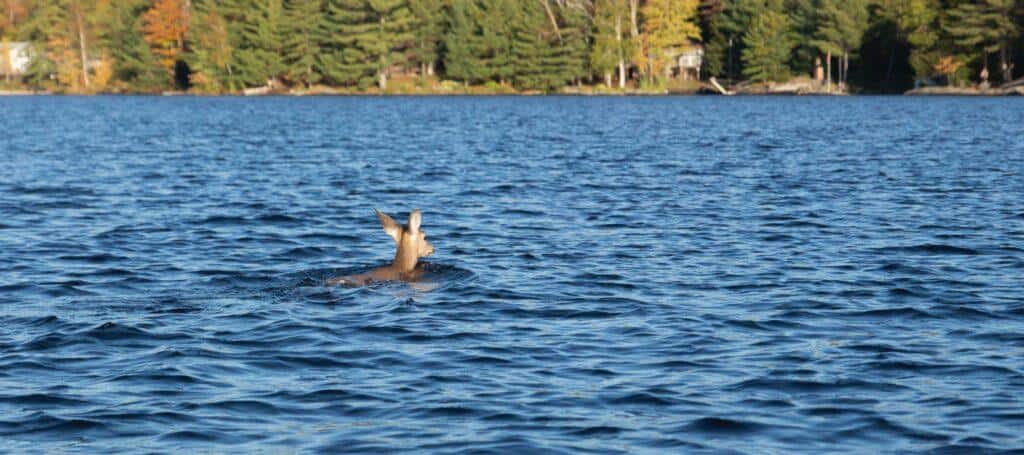
Conservation Strategies in Deer Land Management
Sustainable Hunting and Population Control
Effective deer land management includes conservation strategies to balance the ecosystem. Staying informed about local wildlife laws is crucial. Sustainable hunting practices, such as managing hunting seasons and bag limits, help keep deer populations stable and prevent overpopulation, which can harm habitat and deer health.
Habitat Improvement for Deer
Enhancing natural features like food plots, water sources, and shelter areas is key. Well-managed food plots provide nutrition and can reduce deer browsing on agricultural crops. Consistent access to clean water is vital, especially in dry seasons.
Predator Control for Ecosystem Balance
Monitoring and managing predator populations is essential. It maintains the balance between predators and deer, preventing excessive impacts on deer herds.
Predator Control and Ecological Balance
Monitoring and Managing Predator Populations
Maintaining a balance between predators and deer is crucial. Monitoring predator populations helps make informed decisions about predator control. Identifying key predators like coyotes or bobcats is important for sustainable ecosystem management.
Sustainable Hunting as Predator Control
Responsible hunting practices can help regulate predator numbers. This aligns with conservation goals and maintains the ecosystem’s balance.
Habitat Improvement for Prey and Predators
Creating habitats for prey and smaller predators indirectly supports predator-prey balance. Dense cover areas provide shelter for deer and habitats for smaller predators that control rodents.
Achieving a Balanced Ecosystem
A holistic approach that includes monitoring predators, sustainable hunting, and habitat improvement is vital for long-term deer population health and ecological integrity.


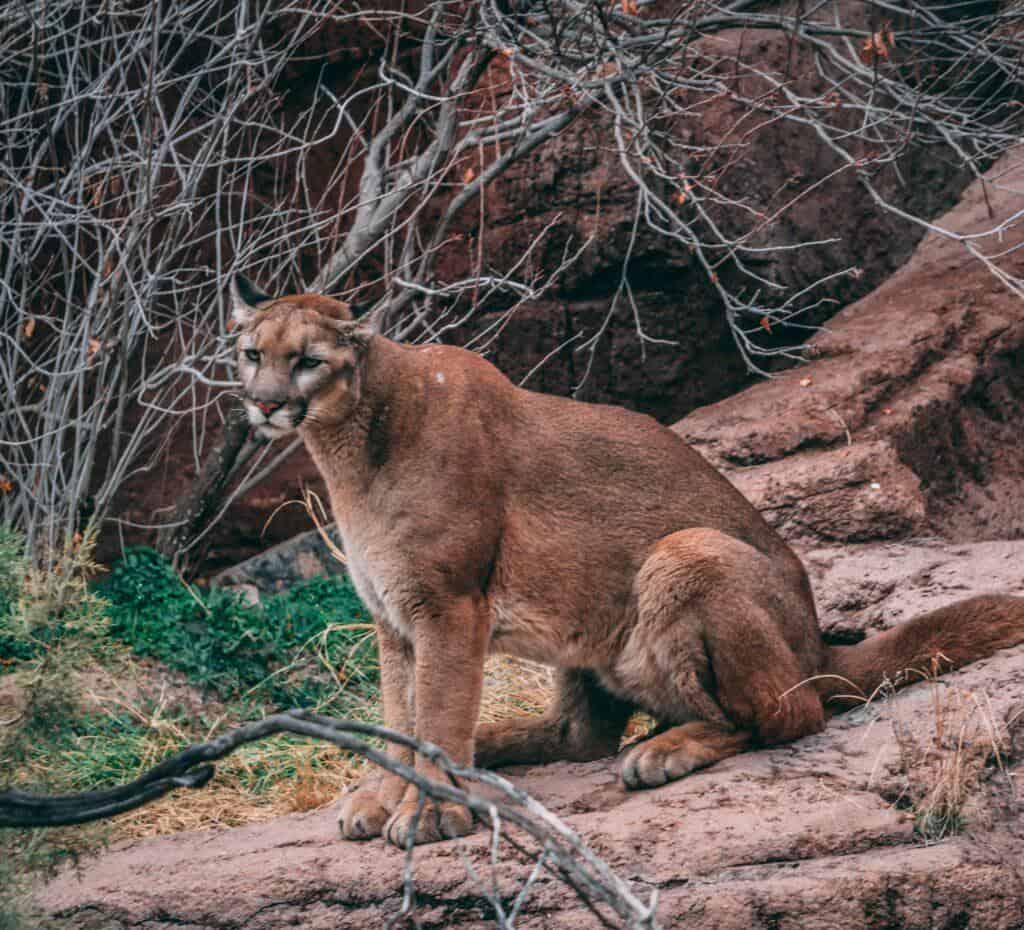
Monitoring Predator Populations
Strategic Use of Trail Cameras
Effective land management for deer includes vigilant monitoring of predator populations. Using trail cameras strategically throughout your property helps identify predators like coyotes, bobcats, and feral hogs. Regularly reviewing camera footage reveals potential threats to deer.
Collaboration with Wildlife Agencies
Working with local wildlife conservation agencies or hunting organizations is beneficial. They provide expert insights and can conduct surveys to assess predator presence and abundance using techniques like scat analysis or hair trapping.
Adhering to Local Regulations
It’s crucial to follow local guidelines for predator control. Balancing deer protection and ecological sustainability is key. States often outline legal predator control methods, protecting wildlife and hunters’ interests.
Sustainable Hunting Practices
Ethical hunting strategies can manage predator populations effectively. Focusing on removing surplus predators while maintaining ecosystem balance is essential.
Maintaining Ecosystem Balance
Monitoring predators is a vital aspect of deer land management. Utilizing trail cameras, collaborating with experts, understanding regulations, and practicing sustainable hunting contribute to deer well-being and ecological health.
Monitoring and Managing Deer Population Health
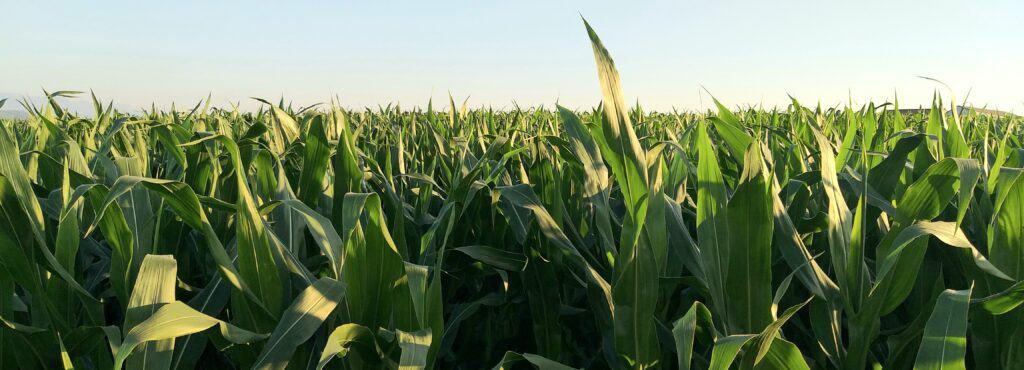
Disease Control and Genetic Diversity
Effective land management includes monitoring deer health, focusing on disease control, genetic diversity, and population dynamics. Regular monitoring for diseases like Chronic Wasting Disease (CWD) and Epizootic Hemorrhagic Disease (EHD) is crucial. Working with local wildlife authorities helps stay informed and implement preventive measures.
Genetic diversity prevents inbreeding and maintains a strong deer population. Encouraging natural dispersal and habitat connectivity supports this diversity.
Understanding Population Dynamics
Conducting surveys and analyzing data on herd composition, such as buck-to-doe ratios and fawn recruitment, provides insights into deer health. This guides decisions on hunting regulations and conservation strategies.
Balancing Predator Populations
Monitoring predators like coyotes ensures they don’t overly impact deer. Responsible predator control, guided by surveys, maintains ecosystem balance.
Land Management: Controlling Deer Diseases
Addressing Chronic Wasting Disease (CWD)
CWD, a serious neurodegenerative disease, requires strategies to minimize deer-to-deer contact and environmental contamination. Awareness and prompt action can prevent its spread.
Combating Epizootic Hemorrhagic Disease (EHD) and Bluetongue Virus (BTV)
EHD and BTV, spread by biting midges, are significant threats. Managing mosquito populations and reducing moist habitats can mitigate these risks.
Regular Health Monitoring
Regular health checks, possibly with the help of wildlife health specialists, are vital for early detection of diseases. This informs effective management and intervention strategies.
Sustainable Hunting Practices
Ethical hunting helps manage deer populations and control disease spread, targeting older or weaker individuals more prone to illness.
Comprehensive Disease Management
Implementing disease control measures, such as reducing contact, managing insect populations, and responsible hunting, maintains deer population health and ecosystem sustainability.
Genetic Diversity in Deer Land Management
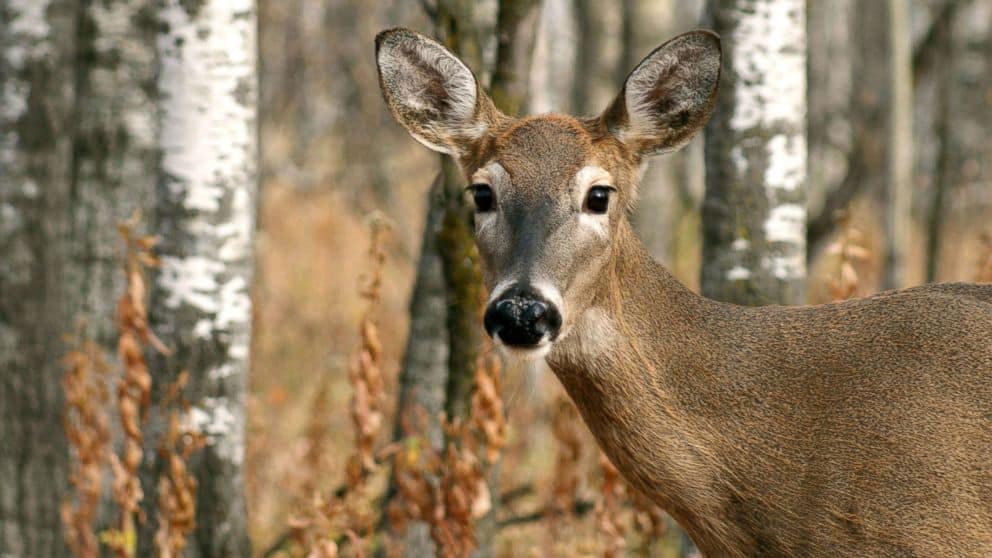
The Importance of Genetic Diversity
Genetic diversity is vital for the resilience and health of deer populations, crucial for ecological sustainability and reducing disease risk. Variety is essential in maintaining a thriving deer population.
Genetic Testing and Analysis
Understanding local deer genetics involves genetic testing and analysis. This can reveal health and genetic makeup, identifying inbreeding or low variation issues, guiding appropriate management actions.
Enhancing Genetic Diversity
Introducing genetically diverse individuals from other areas through translocation programs or selective breeding is one approach. These efforts balance genetic diversity with local adaptation suitability.
Habitat Connectivity
Habitat fragmentation can hinder gene flow. Creating connectivity corridors allows gene exchange and promotes genetic diversity.
Compliance with Regulations
Managing genetic diversity should align with local wildlife conservation laws. This ensures effective land management while adhering to legal guidelines.
Legal Considerations in Deer Land Management
Understanding Local Regulations
Local hunting regulations and restrictions vary. Familiarization with these is critical for lawful and responsible deer management.
Ecological Sustainability
Balancing deer populations with their habitats is key. Measures like habitat improvement, soil analysis, and predator control contribute to ecosystem health.
Hunting Ethics
Responsible hunting practices, including fair chase and wildlife respect, are essential. Adherence to ethical guidelines promotes sustainable hunting.
Documentation and Record-Keeping
Maintaining accurate records of hunting activities, licenses, and property boundaries is vital for legal compliance and population monitoring.
The Role of Legal Compliance
Understanding and complying with local regulations is central to effective deer management. It ensures lawful practices, promotes ethical hunting, and supports long-term conservation efforts, maintaining healthy deer populations and preserving natural resources.
Local Regulations in Deer Land Management
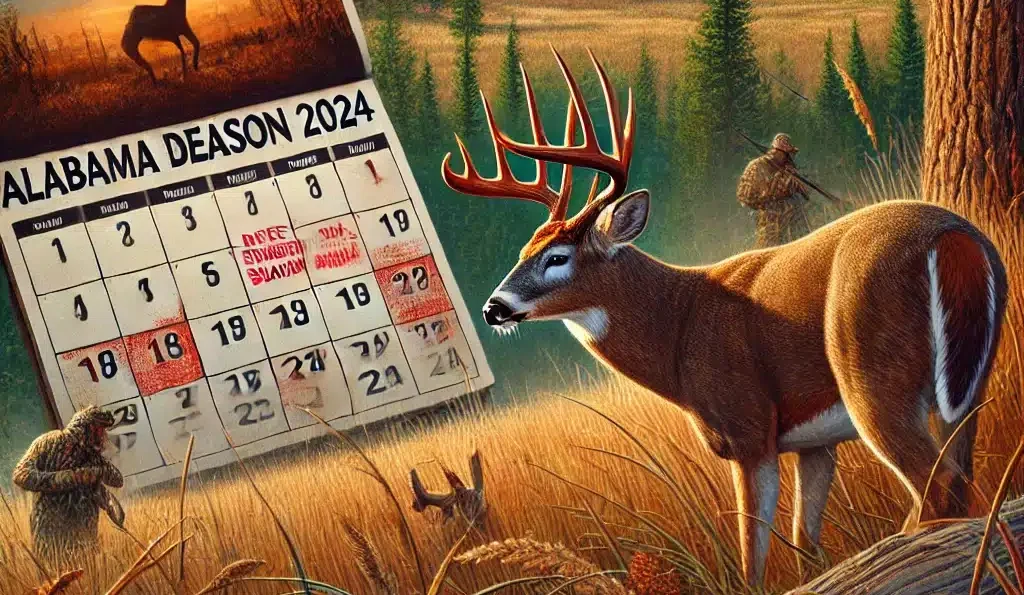
Understanding Restrictions and Guidelines
Local regulations are pivotal in deer land management. Familiarizing yourself with local laws ensures your management practices align with ecological sustainability and wildlife conservation efforts.
Predator Control Regulations
Predator control is essential but must comply with local guidelines. These may include specific rules on trapping or hunting predators, aiming for balance in ecosystem management.
Food Plot Management
Local laws might dictate the size or location of food plots used for deer management. Awareness of these limitations is crucial for legal compliance.
Sustainable Hunting Practices
Local regulations often outline hunting season dates, bag limits, and permissible weapons. Adhering to these rules ensures ethical hunting and contributes to deer population management.
Broader Environmental Regulations
Consider broader environmental laws, such as those governing water source alterations or soil analysis. Compliance with these regulations protects environmental integrity and supports sustainable management.
Working with Conservation Authorities
Collaborating for Sustainable Management
Partnering with conservation authorities enhances your land management efforts. These organizations offer guidance on regulations, research, and best practices for ecological sustainability and deer population health.
Regulatory Guidance and Research
Conservation authorities can provide insights into local deer management regulations and research findings. This information is key to informed habitat improvement and sustainable hunting.
Educational Opportunities
Participating in programs and workshops offered by conservation authorities enhances knowledge and skills in land management, demonstrating a commitment to responsible stewardship.
Fostering Collaboration
Engaging with conservation authorities promotes collaboration among wildlife conservation enthusiasts. This partnership contributes to the success of your land management efforts and broader ecosystem balance goals.
Impact of Partnerships
Working closely with conservation authorities ensures your management aligns with wider ecological goals. Their support in understanding local regulations, research, education, and collaborative initiatives is vital for effective deer land management. With their assistance, you can significantly impact deer populations and overall ecosystem health.
Sustainability and Long-Term Planning

Emphasizing Ecosystem Balance
Sustainable land management for deer focuses on the future, balancing ecosystem health and wildlife conservation. This long-term perspective is essential for maintaining thriving deer populations.
Habitat Improvement Strategies
A key to sustainability is creating diverse and healthy habitats. Food plots offering year-round nutrition not only attract deer but also support their overall health.
Predator Control for Balance
Effective predator control is crucial for maintaining sustainable deer populations. Monitoring and managing predator populations help preserve the balance between prey and predators, ensuring ecological diversity.
Water Resource Management
Ensuring consistent water availability is vital, especially in dry areas or periods. Developing water sources like ponds or troughs supports deer populations during challenging times.
Sustainable Hunting Practices
Adhering to hunting regulations, including season dates and bag limits, is crucial for ethical and sustainable hunting. These practices contribute to the long-term health of deer populations.
Ecological Considerations in Deer Land Management
Focusing on Habitat Quality and Diversity
Ecological considerations involve enhancing habitat quality. Incorporating native vegetation and providing ample cover supports a vibrant ecosystem benefiting various species.
Responsible Predator Control
Balancing predator presence with deer populations is key. Responsible predator control measures ensure a sustainable ecosystem without harming other wildlife.
Water Source Maintenance
Access to clean water is fundamental for all life forms, including deer. Maintaining water sources is essential for the health of the deer and their ecosystem.
Adhering to Regulations and Ethical Hunting
Following local regulations and ethical hunting practices protects wildlife populations and hunting traditions. This approach promotes sustainable hunting that benefits both humans and wildlife.
Harmonious Coexistence Through Ecological Sustainability
Careful ecological considerations, including habitat improvement, predator control, water management, and ethical practices, are essential in deer land management. These efforts ensure a balanced and harmonious coexistence within ecosystems, promoting sustainable deer populations and ecological health.
Future Generations and Deer Land Management

Prioritizing Long-term Ecosystem Health
In managing land for deer, it’s vital to consider the impact on future generations. Our actions today – from habitat improvement to water source management – shape tomorrow’s landscape and wildlife sustainability.
Balancing the Ecosystem for Future Enjoyment
Ensuring future generations can appreciate deer involves balancing the ecosystem. Sustainable hunting and careful population monitoring prevent overpopulation and its environmental toll, helping to maintain a healthy deer population and ecosystem.
Compliance with Local Regulations for Sustainability
Adhering to regional regulations on hunting and conservation is key. By aligning with these guidelines, we contribute to broader conservation goals and ensure sustainable practices for future generations.
Nutritional Planning with Food Plots
Strategically developed food plots, tailored to seasonal nutritional needs, are crucial for sustaining deer populations over time. This foresight ensures a continuous food source for deer, supporting their long-term well-being.
Shelter Preservation for Deer Security
Establishing safe, undisturbed shelter areas for deer, filled with dense vegetation, is essential. These areas provide necessary cover and protection, contributing to the long-term survival of deer populations.
Land Management Case Studies and Success Stories
Learning from Real-world Examples
Case studies and success stories in deer land management offer invaluable insights and inspiration, demonstrating effective strategies and outcomes.
Transformative Habitat Improvement in Illinois
John Baker’s success story from Illinois shows the impact of soil analysis and habitat improvement. His strategic approach to food plots and vegetation restoration led to a flourishing deer ecosystem.
Collaborative Restoration in Michigan’s Upper Peninsula
A collaborative effort in Michigan saw the restoration of a logging-affected area. By focusing on diverse habitats and predator control, the group improved deer habitat and established sustainable hunting practices.
Innovative Conservation in Southern Texas
Maria Rodriguez in Texas exemplifies how working with conservation experts and adhering to regulations can lead to innovative land management, enhancing wildlife habitats and ecological sustainability.
Responsible Hunting Ethics in Ohio
Jake Thompson in Ohio illustrates the benefits of disease control and genetic diversity management. His approach to sustainable hunting and careful monitoring improved deer population health and conservation.
The Power of Thoughtful Management
These case studies underscore the importance of informed, passionate, and committed land management. Through soil analysis, habitat creation, and sustainable practices, landowners can significantly impact deer populations and ecological health.






